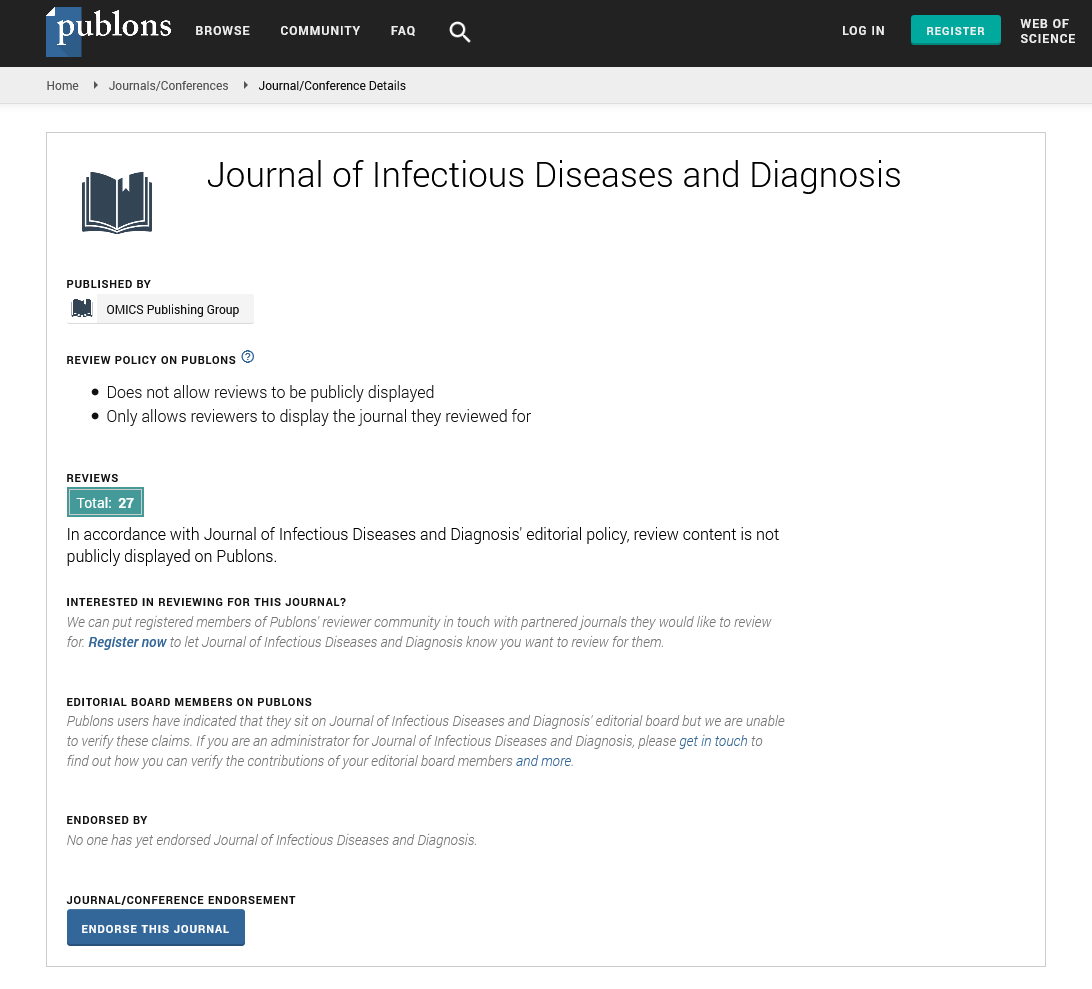Indexed In
- RefSeek
- Hamdard University
- EBSCO A-Z
- Publons
- Euro Pub
- Google Scholar
Useful Links
Share This Page
Journal Flyer

Open Access Journals
- Agri and Aquaculture
- Biochemistry
- Bioinformatics & Systems Biology
- Business & Management
- Chemistry
- Clinical Sciences
- Engineering
- Food & Nutrition
- General Science
- Genetics & Molecular Biology
- Immunology & Microbiology
- Medical Sciences
- Neuroscience & Psychology
- Nursing & Health Care
- Pharmaceutical Sciences
Opinion Article - (2025) Volume 10, Issue 5
Herpes Simplex Virus (HSV) Infections: Epidemiology, Diagnostic Advances and Therapeutic Management
Daniel Whitman*Received: 29-Aug-2025, Manuscript No. JIDD-25-30296; Editor assigned: 01-Sep-2025, Pre QC No. JIDD-25-30296 (PQ); Reviewed: 15-Sep-2025, QC No. JIDD-25-30296; Revised: 22-Sep-2025, Manuscript No. JIDD-25-30296 (R); Published: 30-Sep-2025, DOI: 10.35248/2576-389X.25.10.355
Description
Herpes Simplex Virus (HSV) infections remain a significant public health concern worldwide, affecting individuals across diverse age groups and geographic regions. HSV exists primarily in two forms HSV-1 and HSV-2 each associated with distinct but sometimes overlapping clinical presentations. HSV-1 is traditionally linked with orolabial infections, while HSV-2 is more commonly related to genital infections. However, changing behavioral patterns have contributed to a rise in genital HSV-1 cases, especially among young adults. The virus establishes lifelong latency in sensory nerve ganglia, leading to recurrent episodes that vary in frequency and severity among individuals. Globally, HSV infections are widespread. HSV-1 affects the majority of the population, often acquired during childhood through nonsexual contact. HSV-2 continues to be one of the most common sexually transmitted infections, with prevalence particularly high in regions with limited access to healthcare resources. Asymptomatic shedding plays an important role in the continued transmission of both HSV types, highlighting the need for improved awareness, early diagnosis and timely management. The recurrent nature of HSV, combined with social stigma and psychological distress, further emphasizes its impact on quality of life.
Advances in diagnostic methods have significantly improved the ability to detect HSV accurately and efficiently. Modern molecular and culture-based techniques have strengthened early diagnosis, which is vital for guiding clinical decisions and preventing complications. Viral culture remains a reliable method for identifying active HSV infections, especially when samples are collected from fresh lesions. Although its sensitivity decreases as lesions begin to heal, culture provides clear evidence of viral presence when positive. Direct antigen detection methods, such as immunofluorescence assays, offer quicker results and can be useful when rapid clinical decisions are required. Serological testing also contributes to diagnosis by identifying type-specific antibodies, enabling clinicians to distinguish between prior exposure and new infection. This is particularly helpful in prenatal care, where determining serostatus can guide strategies to prevent neonatal transmission.
Therapeutic management of HSV focuses on reducing symptom severity, shortening the duration of outbreaks and preventing recurrence. Antiviral medications such as acyclovir, valacyclovir and famciclovir are the primary agents used for treatment. These drugs work by inhibiting viral replication, thereby limiting disease activity. For individuals experiencing frequent outbreaks, suppressive therapy can markedly lessen recurrence rates and reduce the risk of transmission to partners. Episodic therapy, on the other hand, is recommended for those with less frequent symptoms and is initiated at the onset of a new outbreak to control progression.
In cases involving severe or disseminated infections such as those affecting immunocompromised individual’s intravenous antiviral therapy may be necessary. Neonatal herpes, although rare, is a serious condition requiring immediate treatment to prevent longterm complications. As such, proactive management during pregnancy, particularly for mothers with active genital lesions, plays a significant role in reducing neonatal risk.
Nonpharmacological interventions also support long-term management. Patient education regarding triggers such as stress, fatigue and illness can help individuals anticipate outbreaks and seek early treatment. Counseling on safe sexual practices, disclosure and preventive measures further contributes to reducing transmission rates. Advances in research continue to explore vaccine development, novel antiviral compounds and immunebased therapies, offering hope for improved disease control in the future.
HSV infections remain a major global health issue with considerable clinical and social implications. Epidemiological trends underscore their widespread nature, while advancements in diagnostic techniques have enhanced early and accurate detection. Current therapeutic approaches effectively manage symptoms and reduce recurrence, though the search for a definitive cure continues. Ongoing research and public health initiatives are essential for reducing transmission, improving care and supporting individuals affected by this lifelong viral infection.
Citation: Whitman D (2025). Herpes Simplex Virus (HSV) Infections: Epidemiology, Diagnostic Advances and Therapeutic Management. J Infect Dis Diagn. 10:355.
Copyright: © 2025 Whitman D. This is an open-access article distributed under the terms of the Creative Commons Attribution License, which permits unrestricted use, distribution and reproduction in any medium, provided the original author and source are credited.

